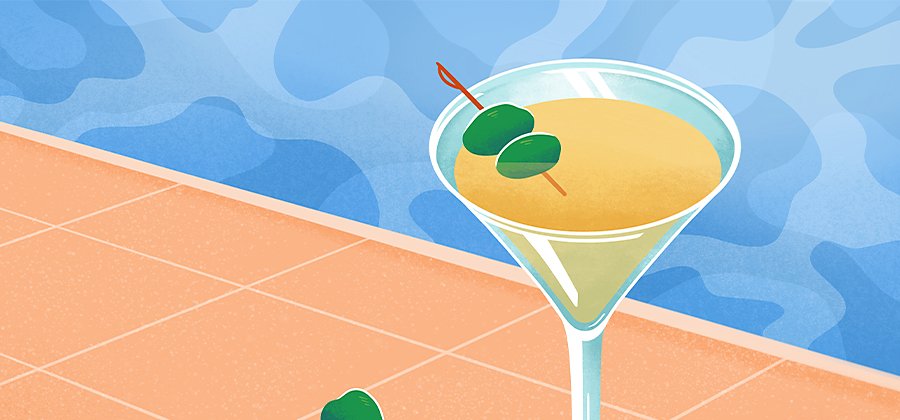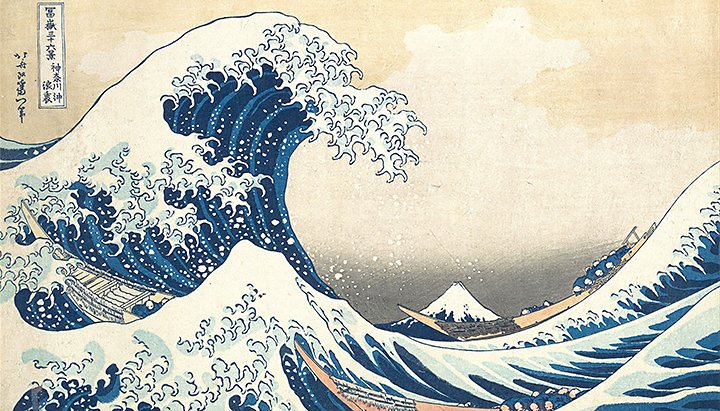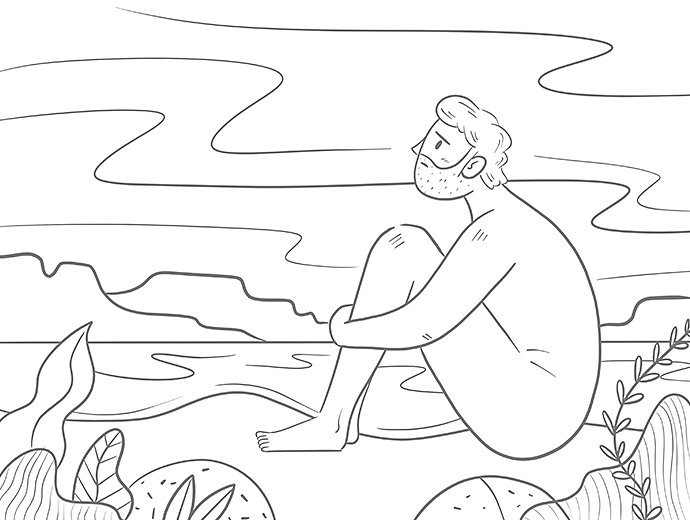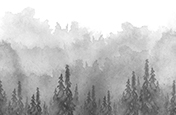How to draw water.
Whether you craft white-capped ocean waves or a calm, picturesque pond, follow this drawing tutorial to master the art of drawing water.

Image by Alyssa Newman
Water, water, everywhere.
Nearly every artist needs to know how to draw water. If you specialize in landscapes, you’ll probably want to include an ocean or lake at some point, and even portraits or still lifes can feature glasses of water or swimming pools.
Water is also versatile, and it can evoke just about any feeling. It can appear as a majestic force of nature, like in Hokusai’s The Great Wave off Kanagawa, or as vast desolation, like in Théodore Géricault’s The Raft of the Medusa, or it can look like wonder and mystery in John William Waterhouse’s Miranda.

Image by Katsushika Hokusai
There is no single color, shade, or shape of water. To successfully draw water, an artist must become like water: constantly flowing, constantly adapting, and always aware of motion and light.
Drawing oceans, lakes, seascapes, and ponds.
When you draw water as part of a landscape, first determine what’s happening on the water’s surface. Is it a calm ocean with gentle waves beneath a cloud-dotted sky? Is it a placid lake with the barest of ripples? Is it a storm-tossed sea? Regardless of the state of your waterscape, remember that it is always dynamic.
Even the calmest and most peaceful lake or ocean will have some movement and play with light in some way. When you draw water, you also draw how light plays on water. “Know your light source and stick to your light source,” says artist and illustrator Alyssa Newman. With water, that light source will usually be the sun or moon, but it can also be the lights from a ship, city, or lighthouse. Remember what direction the light is coming from, how intense the light is, and how the light bends and plays over the water’s surface.
Keep reflections in mind.
“If you’re illustrating an ocean or other body of water,” says Newman, “often you want that body of water to reflect the sky a little bit.” A bright blue sky obviously won’t have a dark ocean beneath it. Rather, an ocean under a summer sky will be only slightly darker than that sky, but still vivid.
If your watery surface reflects elements like trees or people, think about how the water moves and where your light source comes from. The relative stillness or motion of the water will inform how distorted your reflection is, and the direction and intensity of the light source will affect any flares or flashes on that reflection. Reflections in water are transparent and shadowy, so use more muted colors to show that.

Drawing waves, splashes, and water in motion.
Almost any ocean or lake has waves. Sometimes those waves can be small, a few bits of motion upon a surface. “It’s almost like fabric blowing in the wind,” says illustrator and comic artist Jonathan Case. “That’s what the surface tension of water looks like.” That surface can flow gently or rapidly, but as it flows you can use bubbles and water ripples to communicate the motion. “If you want to communicate the flow of water, you need to pick areas where you have these nice, soft blowing lines interrupted by these shorter, bubbled areas,” says Case.
A calm, rippling surface, though, is often interrupted by waves and splashes. Those waves and splashes are not singular geometric shapes. They are complex, temporary, and always unique. “One of the most important things is to use a variety of shapes,” says Case. “Big shapes and little shapes. Whether it’s water pouring onto something or water on the surface, you want to find ways of organizing small and large forms to make things look more organic.” Avoid uninterrupted lines. Straight lines are products of architecture and engineering, but natural shapes tend to bend, develop, and branch into other things. Wavy lines are more the norm, and if a single line continues unimpeded, add in something to interrupt it and make it more organic.
While you avoid straight lines and defined forms, remember the general shape and flow of your drawing. “All of these forms as they interact with each other are going to flow into one another,” says Case. “But the smaller ones are going to be superseded fairly quickly by the larger ripples.”
Water and color.
Water is not simply blue. It is clear, sea-green, dark, or even white. What’s more, when coloring water, you’re not going to use just one blue hue, but a whole variety of them to show motion, flow, and atmospheric distortion. Water will also contain some of the palette around it. A river that snakes through the Amazon will have trace amounts of green, and an ocean of icebergs will have frigid white within it.
If you’re starting from a graphite pencil drawing or drawing over a stock photo or other source, you can use that image to inform how you shade the water. “You can always use the marks of your underdrawing for what the color is going to do,” says Case. Knowing how to translate pen-and-ink sketches or photographs into colored-pencil drawings or watercolors is important when drawing water. Usually, this means you translate dark and light sections of the water into vivid or paler hues, respectively.


Images by Alyssa Newman
“If you’re doing a landscape, you want to take into account atmospheric perspective, which means how colors change the further they are in the background,” says Newman. “Generally speaking, colors get more muted and softer the further they are in the background.” Water in the foreground of an image will usually have more vivid coloration, be it deep blue or sea green. Toward the horizon, though, oceans and lakes fade into skies or darkness, with details gradually falling away.
A test of a true artist.
Drawing water can frustrate many artists, but it can be rewarding and is a sign of true artistic skill. The ability to draw water in a vast landscape or in tiny droplets, at rest or in turbulent motion, is a great way to show off your technical skills. It is an exercise in adaptability. To draw water is to draw light and motion itself and to be comfortable drawing something that is all about form. Because of that, it’s well worth the study and practice. If you can draw water, you can draw anything.
Regardless of the type of water you’re drawing, you’ll find brushes and other tools to bring it to life in Adobe Fresco.
Contributors
You might also be interested in…
How to draw a wolf.
Capture the wild spirit of the wolf with these drawing tips.
How to draw birds of any feather.
Learn the basics of drawing birds digitally with this step-by-step tutorial.
Try your hand at pencil sketching.
Pencil drawing is an essential first step for most artists. See how this skill can improve your art.
Make your mark with ink drawing.
Explore the subtlety and boldness of ink drawing with these tips and techniques.



